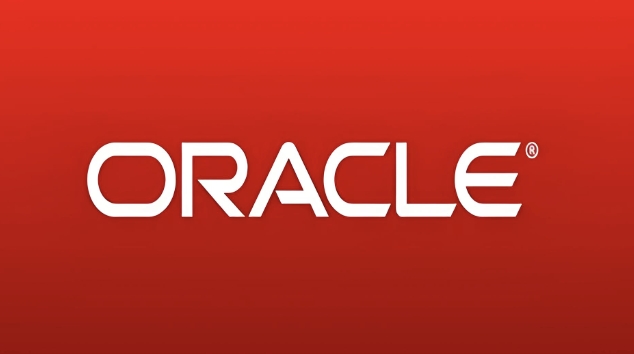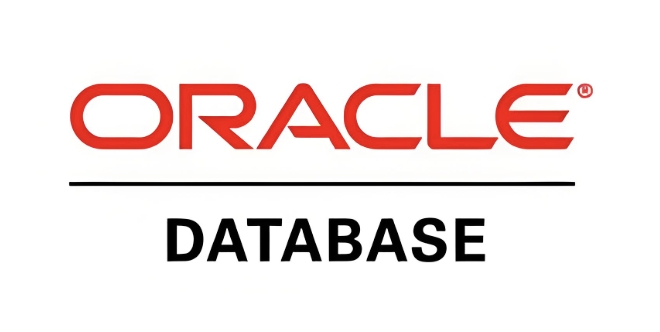What is SYSDATE in Oracle?
SYSDATE in Oracle returns the current date and time from the database server’s operating system. 1. It includes both date and time down to the second and is based on the server's clock, not the client's. 2. It can be used as SYSDATE or SYSDATE() with no functional difference. 3. Common uses include inserting current timestamps, calculating date differences, and adding or subtracting time intervals such as SYSDATE 1 for tomorrow. 4. To format output, use TO_CHAR with a format mask like 'MM/DD/YYYY HH24:MI:SS'. 5. Important notes: SYSDATE is not timezone-aware, returns the same value throughout a single SQL statement, and is widely used in audit columns, triggers, and scheduling logic. Therefore, SYSDATE is a reliable and essential function for time-sensitive operations in Oracle databases.

SYSDATE in Oracle is a built-in date function that returns the current date and time of the database server's operating system. It's commonly used when you need to record or compare the current timestamp in queries, inserts, updates, or calculations involving dates.

Key Points About SYSDATE
-
Returns both date and time: Unlike some date functions that return only the date portion,
SYSDATEincludes the current date and time (down to the second). -
Based on the server clock: The value comes from the database server, not the client machine. So if your application runs on a different time zone than the server,
SYSDATEstill reflects the server's time. -
No parentheses needed (but allowed): You can use it as
SYSDATEorSYSDATE()— both work the same way in Oracle.
Common Uses of SYSDATE
1. Inserting the current timestamp
When logging records, you often want to store when an entry was created:
INSERT INTO orders (order_id, order_date, customer_id) VALUES (101, SYSDATE, 5001);
This sets order_date to the current date and time.

2. Calculating date differences
You can subtract dates to find the number of days between them:
SELECT SYSDATE - hire_date AS days_employed FROM employees WHERE employee_id = 105;
This shows how many days an employee has been with the company.

3. Adding or subtracting time
Oracle lets you add or subtract fractions of a day:
- Add 1 hour:
SYSDATE 1/24 - Add 30 minutes:
SYSDATE 30/(24*60) - Tomorrow:
SYSDATE 1 - One day ago:
SYSDATE - 1
Example:
SELECT SYSDATE, SYSDATE 1 AS tomorrow FROM dual;
Formatting SYSDATE Output
By default, Oracle displays dates in the session's NLS_DATE_FORMAT. To control the format explicitly:
SELECT TO_CHAR(SYSDATE, 'MM/DD/YYYY HH24:MI:SS') AS formatted_date FROM dual;
Output example:
04/05/2025 14:30:22
This is useful for reports or debugging.
Important Notes
-
SYSDATEis not timezone-aware by itself. For timezone support, considerCURRENT_DATEorSYSTIMESTAMP. - It’s deterministic per execution: Every time you reference
SYSDATEin a single SQL statement, it returns the same value (the time when the statement started executing). - Used widely in constraints, triggers, audit columns (like
created_on,updated_on), and scheduling logic.
Basically, SYSDATE is the go-to function in Oracle when you need the current date and time from the database server. It’s simple, reliable, and essential for time-sensitive operations.
The above is the detailed content of What is SYSDATE in Oracle?. For more information, please follow other related articles on the PHP Chinese website!

Hot AI Tools

Undress AI Tool
Undress images for free

Undresser.AI Undress
AI-powered app for creating realistic nude photos

AI Clothes Remover
Online AI tool for removing clothes from photos.

ArtGPT
AI image generator for creative art from text prompts.

Stock Market GPT
AI powered investment research for smarter decisions

Hot Article

Hot Tools

Notepad++7.3.1
Easy-to-use and free code editor

SublimeText3 Chinese version
Chinese version, very easy to use

Zend Studio 13.0.1
Powerful PHP integrated development environment

Dreamweaver CS6
Visual web development tools

SublimeText3 Mac version
God-level code editing software (SublimeText3)

Hot Topics
 1666
1666
 276
276
 How to connect to oracle database connection pool using jdbc
Jun 04, 2025 pm 10:15 PM
How to connect to oracle database connection pool using jdbc
Jun 04, 2025 pm 10:15 PM
The steps to connect to an Oracle database connection pool using JDBC include: 1) Configure the connection pool, 2) Get the connection from the connection pool, 3) Perform SQL operations, and 4) Close the resources. Use OracleUCP to effectively manage connections and improve performance.
 Using Oracle Database Integration with Hadoop in Big Data Environment
Jun 04, 2025 pm 10:24 PM
Using Oracle Database Integration with Hadoop in Big Data Environment
Jun 04, 2025 pm 10:24 PM
The main reason for integrating Oracle databases with Hadoop is to leverage Oracle's powerful data management and transaction processing capabilities, as well as Hadoop's large-scale data storage and analysis capabilities. The integration methods include: 1. Export data from OracleBigDataConnector to Hadoop; 2. Use ApacheSqoop for data transmission; 3. Read Hadoop data directly through Oracle's external table function; 4. Use OracleGoldenGate to achieve data synchronization.
 How to query your administrator password for oracle database
Jun 04, 2025 pm 10:06 PM
How to query your administrator password for oracle database
Jun 04, 2025 pm 10:06 PM
Directly querying administrator passwords is not recommended in terms of security. The security design principle of Oracle database is to avoid storing passwords in plain text. Alternative methods include: 1. Reset the SYS or SYSTEM user password using SQL*Plus; 2. Verify the encrypted password through the DBMS_CRYPTO package.
 How to do oracle without taking a certain field value
Jun 04, 2025 pm 10:21 PM
How to do oracle without taking a certain field value
Jun 04, 2025 pm 10:21 PM
In Oracle database, if you want to not return the value of a certain field when querying, you can use the following three methods: Only list the required fields in the SELECT statement and do not select the unwanted fields. Create views to simplify queries, but pay attention to the complexity and maintenance costs of the views. Excluding unwanted columns using subqueries or JOINs is suitable for dynamic exclusion of columns, but may affect query performance. Each method has its applicable scenarios and potential disadvantages, and the most suitable method needs to be selected based on specific needs and performance considerations.
 What are the differences between physical and logical database structures in Oracle?
Jun 10, 2025 am 12:01 AM
What are the differences between physical and logical database structures in Oracle?
Jun 10, 2025 am 12:01 AM
The logical structure of Oracle database focuses on how data is organized by users and developers, including tables, views, patterns and table spaces; the physical structure involves the actual storage of data on disk, including data files, redo logs, control files, etc. 1. The logical structure includes tables, views, indexes, patterns and table spaces, which determine how users access data; 2. The physical structure consists of data files, redo logs, control files and archive logs, which are responsible for the persistence and recovery of data; 3. The table space is a key bridge connecting logic and physics, and its capacity is limited by the underlying data files; 4. Different roles have different levels of attention, developers focus on logic optimization, and DBA pays more attention to physical management; 5. Understanding the differences between the two can help efficiently troubleshoot problems, optimize performance and reasonable management
 What is Impossible Cloud Network (ICNT)? How? A comprehensive introduction to the ICN project that Binance will launch soon
Jul 07, 2025 pm 07:06 PM
What is Impossible Cloud Network (ICNT)? How? A comprehensive introduction to the ICN project that Binance will launch soon
Jul 07, 2025 pm 07:06 PM
Contents 1. What is ICN? 2. ICNT latest updates 3. Comparison and economic model between ICN and other DePIN projects and economic models 4. Conclusion of the next stage of the DePIN track At the end of May, ICN (ImpossibleCloudNetwork) @ICN_Protocol announced that it had received strategic investment in NGPCapital with a valuation of US$470 million. Many people's first reaction was: "Has Xiaomi invested in Web3?" Although this was not Lei Jun's direct move, the one who had bet on Xiaomi, Helium, and WorkFusion
 Implement synchronization between Oracle database and SQLServer database
Jun 04, 2025 pm 09:57 PM
Implement synchronization between Oracle database and SQLServer database
Jun 04, 2025 pm 09:57 PM
Methods to synchronize Oracle with SQLServer include the use of ETL tools, database replication technology, third-party synchronization tools, and custom scripts. 1. ETL tools such as Informatica and Talend can be used for data extraction, conversion and loading. 2. Oracle's GoldenGate and SQLServer's ReplicationServices provide real-time or near-real-time synchronization. 3. Third-party tools such as Debezium and Attunity provide simplified configuration and powerful synchronization capabilities. 4. Custom scripts can be flexibly customized according to your needs using Python or Java.
 How to export table data from oracle database
Jun 04, 2025 pm 09:51 PM
How to export table data from oracle database
Jun 04, 2025 pm 09:51 PM
Export table data from an Oracle database can use DataPump, SQLPlus, and OracleSQLDeveloper. 1.DataPump: Use the command expdsystem/managerDIRECTORY=data_pump_dirTABLES=your_table_nameDUMPFILE=your_table_name.dmpLOGFILE=export_log.log to increase the speed through the PARALLEL parameter. 2.SQLPlus: Through the command SETPAGESIZE0FEEDBACKOFFVERIFYOFF





